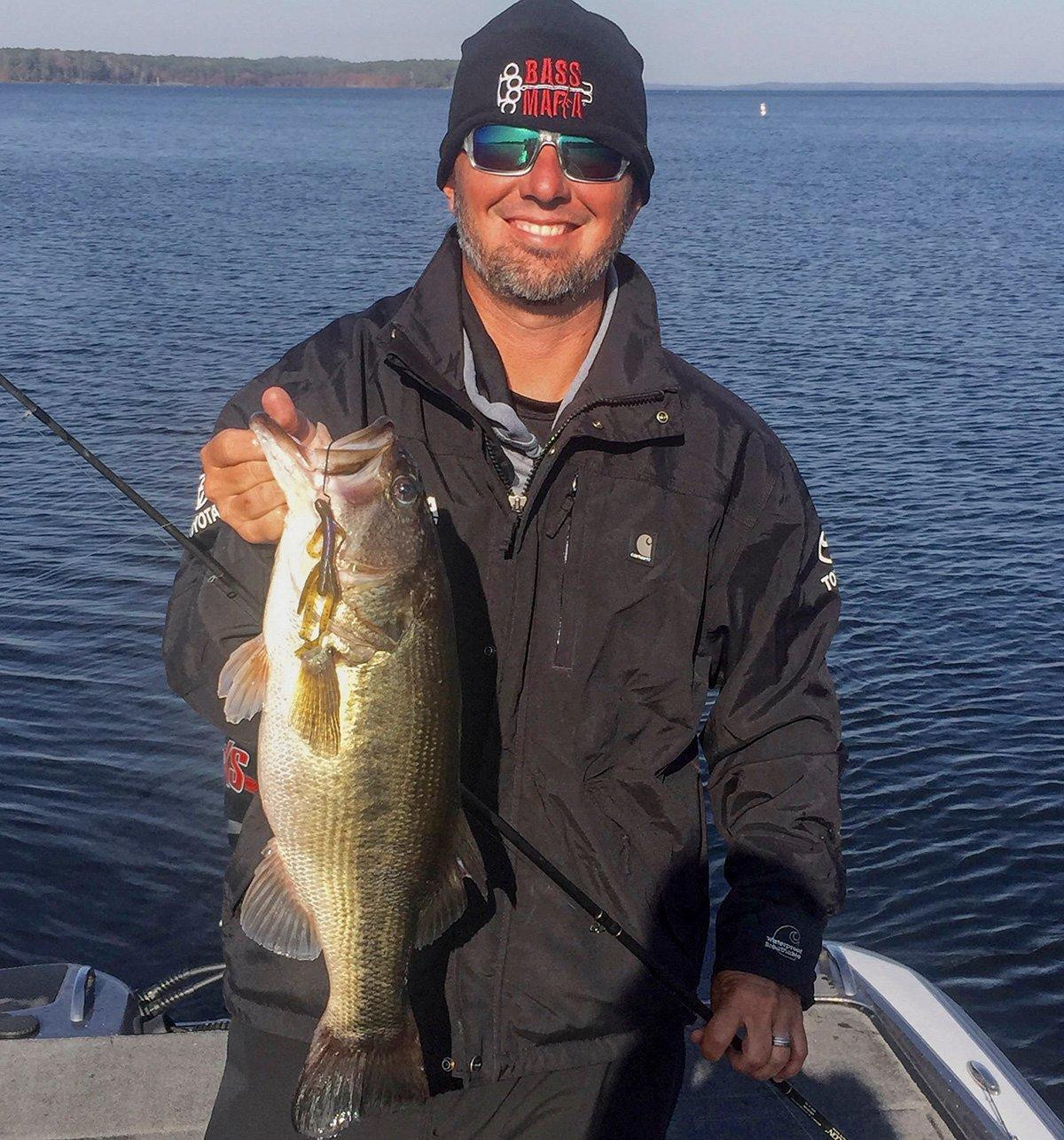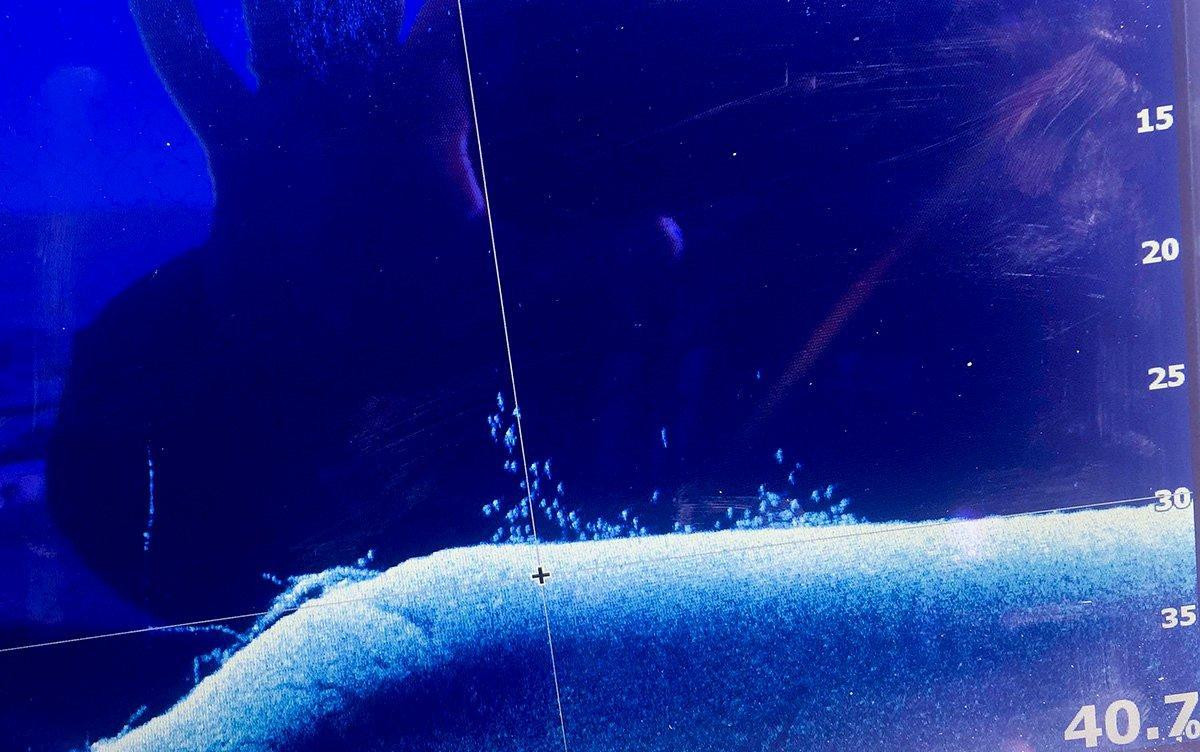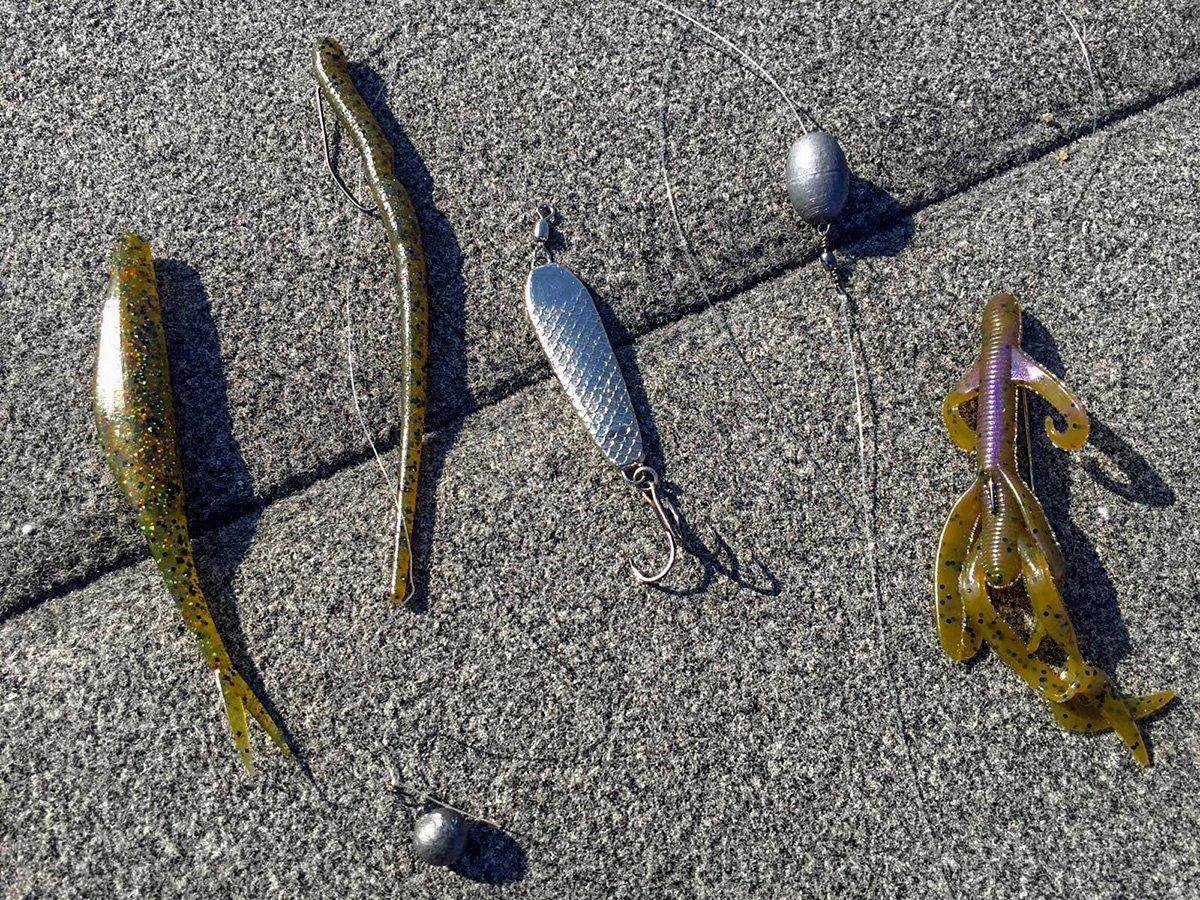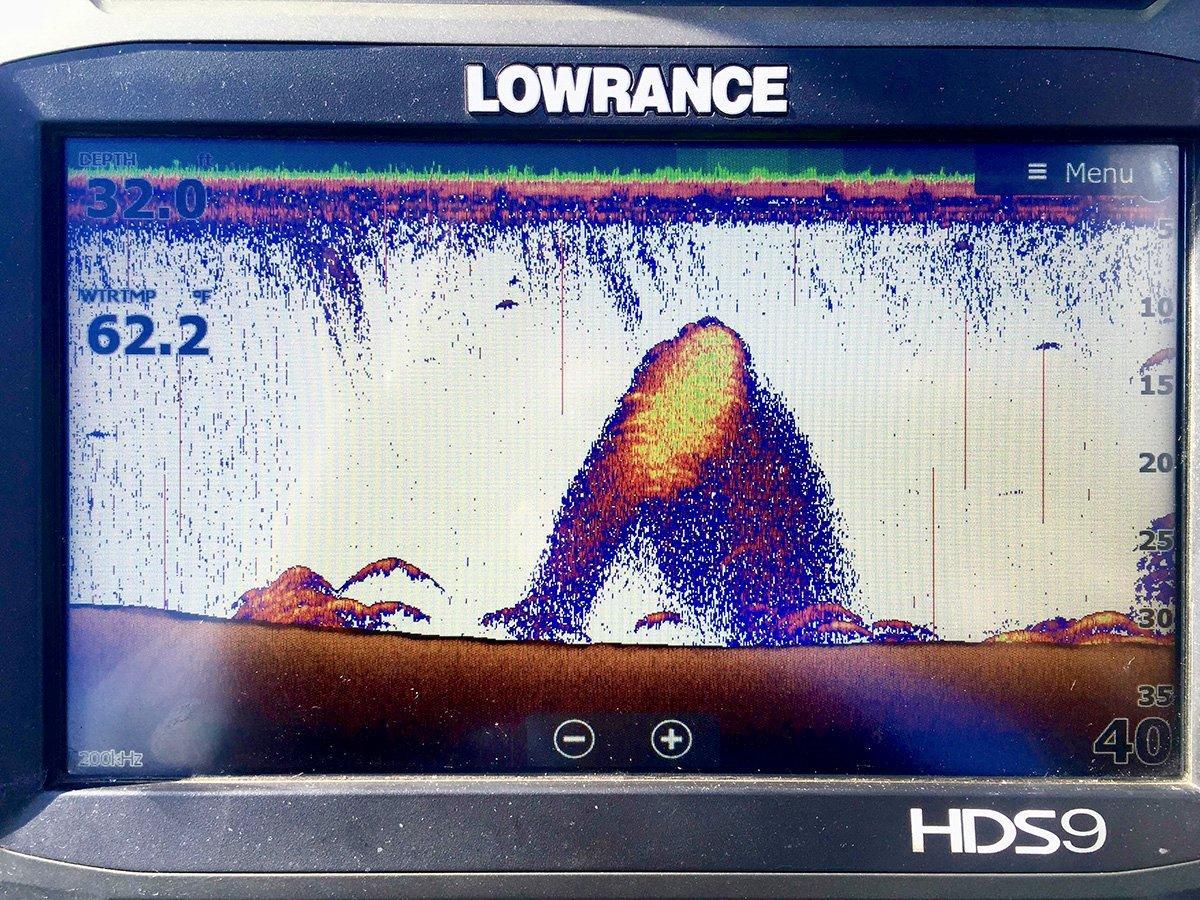Bass fishing seemingly becomes more difficult in the winter. Hands and fingers don’t work as well, the bass aren’t as active and presentations that work become more limited.
Instead of getting frustrated and giving up hope, BASS Opens angler and Toledo Bend fishing guide Darold Gleason fishes off the deep end for winter bass. After countless hours during the winter months spent on the water, Gleason has found bass fishing can be spectacular throughout the winter; you just have to go where the fish go.
This time of year, Gleason finds bass in depths deeper than where many anglers would think to look. Through trial and error Gleason has found a system that works for him when attempting to catch winter bass out of the abyss.

FIND BASS DEEP
Catching winter bass out of the depths isn’t as easy as racing your boat towards deep water and casting out a line.
“Deep is relative depending upon the body of water and the clarity of water you’re fishing,” Gleason explained. “Super deep on a lake like Toledo Bend may be 25-40 feet. While really deep on Table Rock or Lake Lanier could be anywhere from 60-100 feet.”
Gleason begins his search for super deep winter bass in areas near or around their summer hangouts. This, too, is going to be contrasting depending upon the body of water you are fishing. For simplicities sake, we’ll say spots like deep underwater humps, submerged roadbeds, and river channel swings or ledges. These are all areas famous for housing populations of bass in the heat of summer, but Gleason knows to give them a look in the colder months, too.
“It may sound weird, but those deep winter bass will hole-up near their summer structure,” Gleason said. ”They usually won’t be on the exact same area, but they will be near it. I like to take my best summer spots and look at the deepest edges.”
This is when Gleason relies heavily on his Lowrance electronics. He’ll slowly idle the structures he thinks could hold bass, using his graph to visibly see schools of baitfish and predatory fish.
“It makes it a little more challenging, because in winter you can’t quickly idle specific little spots,” Gleason said. “You have to idle the whole structure to find the fish. The fish might be 100 or 200 yards away from the best looking spot on the structure, but they are still there. They’ll just be with the baitfish out a little deeper than you are used to looking.”

ELECTRONICS A MUST
“Down Scan imaging helps a lot when idling expansive areas, but you can still find deep fish with 2D sonar,” Gleason explained. “In fact, once I move up to my trolling motor and I am fishing, I only use 2D sonar. For me, I can get a clearer picture with my sonar when I am sitting right on top, or just off of the school, versus using Down Scan imaging.”
Many folks want to know exactly what a bass looks like on sonar or side imaging. Unfortunately, there isn’t any magic answer to this question. Time with the equipment will give you a comfort level for what you are seeing.
“Knowing what you’re looking at on your electronics is really just a process of elimination,” Gleason admitted. “You just have to spend time tinkering with your graphs to have a clear idea of what they are showing you. My advice is to take some time to graph different areas and schools of fish, then catch a few out of each school. Then even go back and idle them again once you know for sure they are bass.
“Through time, this is going to give you a good idea of what largemouth relating to baitfish look like. It’s also going to teach you what isn’t a school of fish. You’d be surprised at how much a brush pile can look like a school of bass until you set the hook into it, even with today’s modern electronics. It just takes practice.”
If you are a novice to using electronics, Gleason explained that winter could be the best time for you to experiment using them. During the winter month’s bass, baitfish, and other species of fish will all get tightly grouped up in small spots.
“That’s one nice thing about deep winter fishing — the fish are either there, or they are not,” Gleason said. “You might idle thousands of yards without so much as a blip on your screen and then all of the sudden you will find them, and usually a lot of them in one little area. This makes all the time you burn idling around looking worth it, because when you find the fish, you can find huge schools.”
What you will actually see on your electronics screen differs from day to day, even minute to minute, but in general Gleason just tries to pick out the obvious.
“On your Sonar you want to find lasagna where you’re seeing hard returns on your graph,” Gleason said. “Ideally, you want to see a cloud-like school of baitfish with little arches and diagonal streaks below them, or even running through them. Those are feeding fish. But just as often in the winter, I will find schools of bass suspended with the shad, with little to no separation.”
When Gleason is behind the console of his boat, idling around, he favors using DownScan imaging and what he sees using this will vary slightly from what he sees on his 2D Sonar.
“With using DownScan imaging what you often see is a cloud-like school of baitfish with little snowflake looking dots underneath them,” Gleason explained. “This time of year, there is no telling what species of fish they are, so at that point you have to fish for them.”

BEST ULTRA DEEP LURES
Once Gleason locates a school of fish with his electronics, he relies on three different bait presentations. Gleason will rotate through all three of these lures on each school he fishes.
Jigging Spoon
“The first bait I pick up throughout the winter is a little nickel-plated, 7/8-ounce War Eagle Jigging Spoon,” Gleason said. “It may not be the sexiest lure on the market, but those little things will flat out catch fish. I work a spoon pretty aggressively, even in the cold water. I’ve learned the more activity I see on my electronics, the more action I can impart on the spoon.”
Gleason throws his jigging spoon on a 7-foot Medium Heavy Cara Falcon Rod and a super fast 8:1:1 Quantum Smoke reel spooled with 15 to 17-pound fluorocarbon line.
Drop Shot
“If I can’t get them to eat the spoon, I’ll pick up a drop shot,” Gleason said. “I’ll usually throw the lightest weight I can, something around 1/4-ounce. I like to throw a watermelon candy V&M Pork Pin on a drop shot, but any finesse worm should get the job done. Honestly, when I am fishing a drop shot I’m not doing a whole lot. Essentially I am just getting the groceries down in front of them and hoping they’ll bite.”
When drop shotting, Gleason uses a 7-foot Jason Christie Falcon spinning rod with an Exo Quantum spinning reel. Gleason favors 12-pound braided line for his main line and keeps about a 6-foot leader of 8-pound fluorocarbon to help get a few extra bites throughout the day.
Carolina Rig
“The Carolina Rig is my clean up bait for winter schools because I know I’m liable to catch a giant with it,” Gleason admitted. “I don’t get a lot of bites with it, but I get big ones. I still throw just a 1-ounce lead sinker on my rig, because you break off a lot. There is no sense in losing that much tungsten. Thread on either a creature or fluke style bait, like a V&M Swamp Hog or Pork Shad.”
The 7-foot 6-inch Falcon Carolina Cara is his rod of choice for this technique fitted with a Quantum Tour MG reel in 7:1:1. To help feel the sensitive bites in the depths, Gleason sticks with 15 to 20-pound fluorocarbon for both his main line and his 2 to 3-foot leader line.
Instead of getting frustrated and giving the bass a break, give Gleason’s tips a chance and spend some time searching the depths this winter. Using your electronics and some of the presentations Gleason mentions above, you have a good chance of finding giant schools of unpressured bass.












